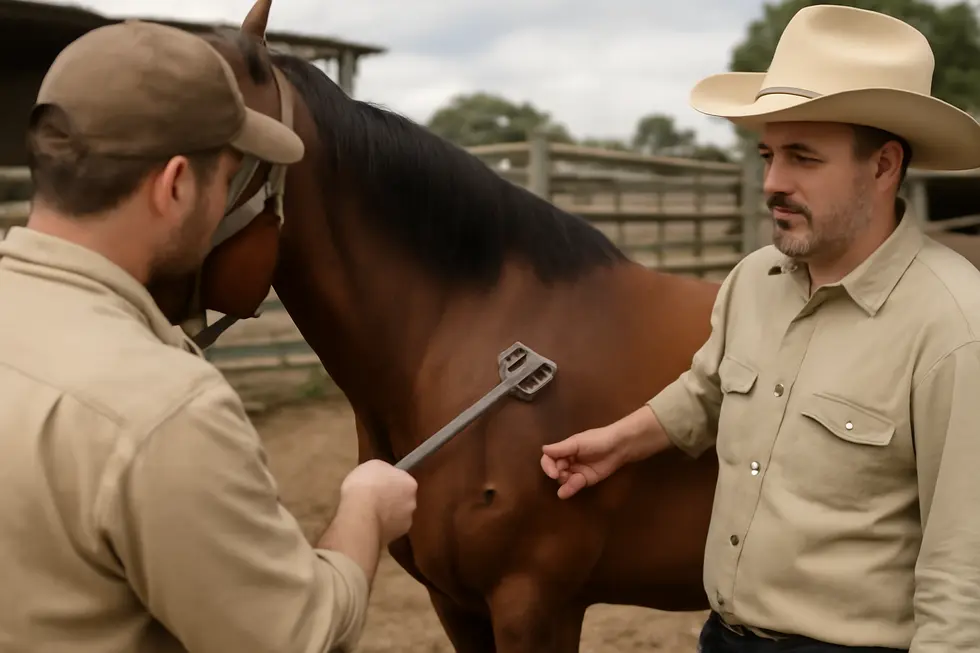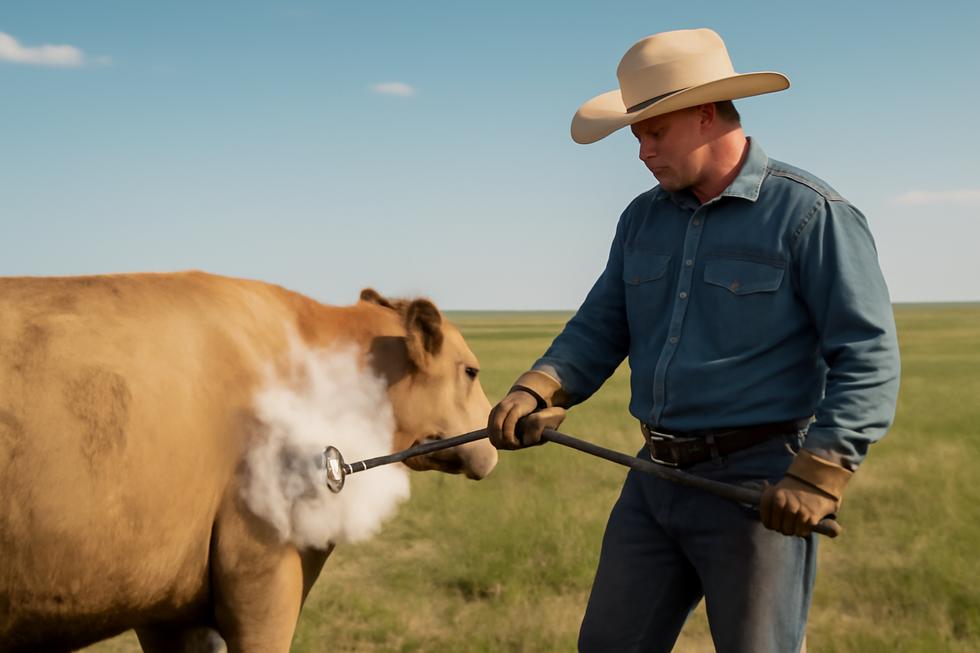Introduction
Designing a livestock brand requires striking the perfect balance between uniqueness, clarity, and legal compliance. For business owners in the livestock industry, a brand is more than just a mark—it embodies ownership, protects assets, and enhances operational efficiency. This guide explores essential steps to design a livestock brand that stands out without infringing on existing marks. It covers selecting meaningful design elements that convey symbolism and identity, adhering to size and placement regulations, applying the brand correctly, understanding the registration process, and leveraging professional design services while navigating jurisdictional nuances. Together, these chapters offer a comprehensive framework to create a livestock brand that secures your property rights and supports your long-term business goals.
Tables of Contents
Chapter 1: How to Design a Livestock Brand: Ensuring Uniqueness and Legal Compliance
- Creating Distinctive Livestock Brands: Avoiding Conflicts and Ensuring Ownership Clarity
- Navigating Legal Requirements for Livestock Brands: State Regulations, Registration, and Protection
- Crafting Distinct Livestock Brands: Balancing Simplicity, Visibility, and Regulatory Standards
- Securing Your Livestock Brand: Legal Registration and Trademark Strategies for Lasting Protection
Chapter 2: How to Design a Livestock Brand: Selection of Design Elements and Symbolism
- Crafting a Livestock Brand: Defining Core Attributes to Guide Powerful Design Choices
- Crafting Distinctive Livestock Brands: Blending Letters, Numbers, Shapes, and Symbols
- Crafting Memorable Livestock Brands: Achieving Simplicity and Meaning with Distinctive Symbols
- Balancing Legal Compliance and Creative Design in Crafting Your Livestock Brand
Chapter 3: How to Design a Livestock Brand: Size, Placement, and Application Methods
- Optimizing Brand Size, Placement, and Application for Clear, Lasting Livestock Identification
- Optimizing Brand Placement and Application for Clear, Lasting Identification
- Permanent Marking Techniques: Applying Livestock Brands with Precision and Care
- Balancing Legal Requirements and Practical Needs in Livestock Brand Design
Chapter 4: How to Design a Livestock Brand: Registration Process and Ownership Rights
- Crafting a Distinctive Livestock Brand: Essential Design Principles and Registration Preparation
- Mastering Brand Registration: Securing Legal Ownership and Fulfilling State Requirements
- Securing Legal Ownership: The Crucial Role of Brand Registration in Livestock Identification
- Securing and Controlling Your Livestock Brand: Use, Inspection, and Transfer Procedures
Chapter 5: How to Design a Livestock Brand: Utilizing Professional Design Services and Jurisdictional Considerations
- Crafting Custom Livestock Brands with Professional Design Services for Scalability and Clarity
- Mastering Jurisdictional Regulations for Livestock Branding Compliance
- Securing Comprehensive Legal Protection for Your Livestock Brand: Beyond Registration to Intellectual Property Rights
- Balancing Practical Brand Application with Jurisdictional Placement and Compliance
Chapter 1: How to Design a Livestock Brand: Ensuring Uniqueness and Legal Compliance

1. Creating Distinctive Livestock Brands: Avoiding Conflicts and Ensuring Ownership Clarity
Designing a livestock brand that stands out while complying with legal standards is essential to protect your property rights. Ensuring uniqueness means crafting a mark with letters, numbers, or symbols that do not duplicate or closely resemble existing brands in your jurisdiction. Many regions enforce specific rules—for instance, Ohio forbids certain characters and mandates clear size and placement requirements to promote easy identification. Officially recording your brand with local authorities establishes exclusive ownership and shields against disputes. It’s crucial to avoid applying new brands over old ones in a way that obscures or damages prior marks. Regular renewal or rerecording may also be necessary to maintain exclusive rights, as seen in states like Wisconsin. Professional design assistance can help refine a distinctive and legally compliant brand, making livestock identification unmistakable. For detailed guidance on state-specific rules and recording procedures, consult your local livestock brand registration office or explore resources on trademark protection for business names and logos.
2. Navigating Legal Requirements for Livestock Brands: State Regulations, Registration, and Protection
Designing a livestock brand demands strict adherence to state-specific legal regulations to secure its uniqueness and protect ownership rights. Each jurisdiction sets clear standards for brand design, including minimum size and placement rules, ensuring a visible and unmistakable mark. For example, Ohio requires brands to be at least three inches tall for cattle, and disallows confusingly similar marks to avoid disputes. Registering your brand with the appropriate state livestock authority is crucial; this often involves submitting detailed designs, paying fees, and sometimes public notification. Some regions, like Queensland, mandate registration prior to use and have precise application processes. Beyond state-level registration, securing federal trademark protection through the USPTO offers broader legal safeguards nationwide. Since branding laws can be complex and vary widely, consulting legal experts may help streamline registration and defend your mark. Thorough compliance not only enforces your rights but also maintains clear, legally recognized identification of your livestock. For additional guidance on trademark protections, consider resources like the trademark protection guide.
3. Crafting Distinct Livestock Brands: Balancing Simplicity, Visibility, and Regulatory Standards
Designing a livestock brand demands a careful balance between uniqueness, clarity, and adherence to legal standards. The brand must be visually simple and distinct to ensure quick identification from a distance, avoiding intricate or overly detailed elements that can confuse or fade over time. States like Ohio and Arizona enforce clear rules on size, character restrictions, and placement to prevent brand duplication and ensure legal clarity. Brands typically incorporate straightforward shapes, letters, or numbers arranged to maximize readability—for instance, following a left-to-right and top-to-bottom order. Additionally, permanence is essential; brands should be applied through authorized methods such as hot iron or freeze branding, ensuring durability and compliance. Care must be taken to avoid overlapping existing marks to preserve ownership histories. Official registration with the relevant authority finalizes the brand’s legal protection. Aligning your livestock brand design with broader identity strategies strengthens its recognition and legal safeguards, much like trademark protections for logos and marks. For a deeper understanding of legal protections that complement branding, explore resources on trademark protection for business names and logos.
4. Securing Your Livestock Brand: Legal Registration and Trademark Strategies for Lasting Protection
Protecting your livestock brand starts with creating a design that is both unique and compliant with local regulations. Uniqueness not only avoids confusion but also prevents legal disputes over ownership, as many states prohibit brands too similar to existing registered marks. Once you have a distinctive design, official registration with the relevant agricultural authority is essential. This formal step establishes your exclusive ownership and allows authorities to recognize your brand legally. Beyond registration, consider trademark protection if you plan to extend your brand into commercial or marketing arenas. Trademarks provide broader legal rights against imitation beyond livestock identification, reinforcing your brand’s value. Legal precedents underscore the importance of distinctiveness and enforcement to maintain your rights. Employ approved and humane branding methods, such as hot iron or freeze branding, to ensure compliance and animal welfare. Vigilant monitoring and enforcement of your brand protect your identity and investment, securing your livestock’s clear identification and your brand’s long-term integrity. For more on trademark protection relevant to livestock brands, resources on trademark protection business name and logo offer valuable guidance.
Chapter 2: How to Design a Livestock Brand: Selection of Design Elements and Symbolism

1. Crafting a Livestock Brand: Defining Core Attributes to Guide Powerful Design Choices
Designing a livestock brand begins with clearly defining the core attributes and purpose that the mark should represent. This foundation shapes every decision about which elements and symbols to include, ensuring the brand conveys ownership, heritage, or ranch identity effectively. Opting for simplicity supports legibility and ease of recognition from a distance, reducing confusion during identification while minimizing stress for the animal. Common design components include letters, numbers, and geometric shapes, chosen not only for uniqueness but also for symbolic meaning. Variations such as tilted or winged letters and walking or lazy numbers infuse character and distinctiveness into the brand. Placement on visible yet humane locations like the shoulder or hip maximizes utility without compromising animal welfare. Above all, aligning the design with its primary purpose—clear ownership identification and theft deterrence—while balancing aesthetics and practicality creates a meaningful and functional brand. Registering the brand according to local regulations protects your rights and upholds legal compliance, a vital step in the design process. For further guidance on brand protection and registration, review comprehensive information about trademark and branding rights at trademark2go.com/trademark-protection-business-name-logo/
2. Crafting Distinctive Livestock Brands: Blending Letters, Numbers, Shapes, and Symbols
Designing a livestock brand begins with combining simple, clear symbolic elements that convey uniqueness and ownership at a glance. Typically, a brand integrates two or three units—letters, numbers, geometric shapes, or simple icons—to create a mark that is legible from a distance while minimizing discomfort for the animal. Letters often represent initials or ranch identifiers and can be stylized in creative ways such as tilted angles, walking poses, or winged effects, adding personality without clutter. Numbers enhance numeric identification with similar stylistic variations like flying or dragged forms. Basic shapes like lines and circles support simplicity and balance, while animal figures or meaningful icons symbolize heritage or important traits, provided they remain uncomplicated and easily recognizable. Placement on visible, practical locations like the shoulder or hip ensures both clear identification and animal welfare. This thoughtful combination not only strengthens brand distinctiveness but also aligns with legal registration mandates to secure ownership rights. For business owners planning their marks, understanding these symbolic choices helps craft a brand that is both meaningful and compliant, complementing insights on trademark protection for livestock brands.
3. Crafting Memorable Livestock Brands: Achieving Simplicity and Meaning with Distinctive Symbols
Designing a livestock brand requires balancing simplicity with distinctiveness to create a mark that is both recognizable and meaningful. Typically, a brand should consist of no more than two or three symbols—such as letters, numbers, lines, or circles—arranged clearly to avoid confusion. These elements can be stylized by tilting or altering the font style while preserving legibility, enhancing uniqueness without complexity. Incorporating symbols that reflect your ranch’s heritage or values can deepen the brand’s significance, connecting it emotionally to your livestock and operations.
Placement on the animal also influences visibility and recognition, so consider how the design’s shape and orientation will appear from different angles. Equally important is ensuring your design does not replicate any registered brand by thoroughly checking local brand registries. Engaging a professional designer experienced in livestock branding can refine your concept into a simple yet striking mark, helping safeguard your identity and making the branding process efficient and effective.
For deeper insight into brand styles and symbolism, resources like the South Texas Cattle Raisers Association’s brand design guidance provide valuable examples and best practices.
4. Balancing Legal Compliance and Creative Design in Crafting Your Livestock Brand
Designing a livestock brand demands careful alignment of legal requirements with thoughtful visual choices to ensure both protection and clarity. Before finalizing a design, confirm its uniqueness by consulting your state or county’s livestock brand registry; this avoids conflicts and secures your legal ownership. Registration requires submitting a clear depiction of the brand alongside its specific placement on the animal, as regulations often dictate acceptable locations and minimum sizes for legibility. From a design perspective, simplicity is paramount—opt for two or three basic elements such as letters, numbers, or geometric shapes that convey your ranch’s identity without causing confusion. Favor open characters and consider creative orientations like tilting or winged letters to craft a distinctive yet straightforward mark. Sketch multiple variations, factoring in how the brand’s layout will appear on the animal’s body to maximize visibility. By integrating these legal and artistic considerations, you create a compliant, unique brand that reliably identifies your livestock and safeguards your rights. For additional insights on protecting intellectual property in business, consider reviewing relevant trademark information.
Chapter 3: How to Design a Livestock Brand: Size, Placement, and Application Methods

1. Optimizing Brand Size, Placement, and Application for Clear, Lasting Livestock Identification
When designing a livestock brand, precise size and placement are crucial for clear identification and animal welfare. Brands for adult cattle typically measure 3 to 4 inches in height with a stroke width of about 3/16 to 1/4 inch to maintain legibility. Younger animals require smaller brands, around 2½ to 3 inches high, to prevent disproportionate markings as they grow. Placement must balance visibility and practicality, often favoring shoulder, neck, or hip areas based on jurisdiction and animal type. The layout—vertical, horizontal, or stacked—should ensure the brand is easily read and fits body contours. Application methods vary: traditional hot iron branding produces a scar, while freeze branding uses extreme cold to kill pigment cells, creating a white hair mark with less discomfort. Each technique has legal and welfare implications. Maintaining simplicity, avoiding overly sharp corners, and confirming unique design through state brand registries safeguard both effective marking and compliance. For more on protecting your brand design, explore trademark protection guidance.
2. Optimizing Brand Placement and Application for Clear, Lasting Identification
Choosing the right placement for a livestock brand is essential for visibility, animal welfare, and legal adherence. Commonly, brands are located on the shoulder, rib, or hip—each offering different advantages. The shoulder provides high visibility and fits naturally between neck and back, while the rib area allows a larger branding surface but may be restricted in some states. The hip gives a distinct mark visible from behind. Regardless of location, brands typically maintain a minimum size of around three inches per character to ensure legibility while minimizing animal distress. Application methods vary, with hot branding using irons heated to an ash gray tone to prevent deep burns, applied quickly with secure restraint to avoid blurred marks. Freeze branding offers an alternative by destroying pigment cells for unique white hair regrowth. Balancing simplicity in design, correct size, and strategic placement yields effective identification that respects animal safety and complies with jurisdictional requirements. For more on protecting your brand, explore trademark strategies relevant to business owners.
3. Permanent Marking Techniques: Applying Livestock Brands with Precision and Care
Applying a livestock brand involves selecting a method that ensures permanence, clarity, and compliance with animal welfare standards. The most traditional technique, hot iron branding, uses a heated iron to create a lasting scar by burning the skin. While widely recognized and permanent, it causes significant pain and may lead to infection or excessive scarring. Alternatively, freeze branding employs extremely cold irons to kill pigment cells, causing hair to regrow white. This method offers a visible, less painful mark ideal for darker-coated animals but is less effective on lighter-colored livestock and requires specialized equipment. Tattooing, though less common in large livestock, offers another permanent option by injecting ink into the skin but tends to be used more for identification in smaller animals. Each method’s suitability depends on jurisdictional regulations, desired visibility, and animal welfare considerations. Choosing the correct application method is critical for a clearly identifiable brand that respects both legal standards and humane treatment.
4. Balancing Legal Requirements and Practical Needs in Livestock Brand Design
Designing a livestock brand requires careful attention to both legal mandates and practical realities to ensure effective identification and compliance. Legally, a brand must be uniquely registered with local or state authorities, avoiding duplication to prevent ownership disputes. Placement is strictly regulated; common locations like shoulders or hips must be chosen to align with jurisdictional rules and ensure visibility while minimizing animal distress. Size plays a critical role — brands should be large enough for clear recognition from a distance but not so large as to cause undue injury or healing complications. Practically, simplicity in design enhances clarity and durability; intricate designs risk blurring or confusion. For application, hot iron branding remains the standard, producing permanent scars, while freeze branding offers a less painful alternative by altering hair color rather than skin integrity. Each method’s suitability depends on animal welfare considerations, legal acceptance, and available equipment. Understanding and integrating these legal and practical factors ensures a livestock brand fulfills its purpose efficiently and lawfully. For more on trademark principles related to unique identification, see trademark protection in business names and logos.
Chapter 4: How to Design a Livestock Brand: Registration Process and Ownership Rights

1. Crafting a Distinctive Livestock Brand: Essential Design Principles and Registration Preparation
Designing a livestock brand requires striking a balance between simplicity, uniqueness, and legal compliance to ensure clear ownership identification. A successful brand employs simple, open characters such as “C” or bars, favoring two or three symbols to enhance readability and prevent ink blotching during branding. Combining letters, numbers, and geometric shapes in varied orientations—like tilted or “lazy” positions—adds distinctiveness while maintaining clarity. Placement is equally crucial; common sites include the shoulder, hip, or neck, with regulations often specifying permissible locations and minimum size to ensure legibility. Before finalizing a design, thorough research in state livestock brand registries is necessary to avoid duplication or confusion with existing marks. This safeguards against legal disputes and secures your branding rights. Registering the brand with the appropriate authority involves submitting a clear illustration, personal details, and applying payment fees. Registration not only grants exclusive ownership but also creates legal proof against unauthorized use. Understanding these foundational design and registration steps is vital before progressing to legal compliance and official approval stages. For deeper insights on protecting your brand identity, resources on trademark protection can offer valuable guidance.
2. Mastering Brand Registration: Securing Legal Ownership and Fulfilling State Requirements
Successfully registering a livestock brand is essential to establishing clear, legal ownership and protecting your livestock from theft or disputes. The process begins with designing a unique, simple brand that meets all state-specific criteria, including readability and placement standards. After finalizing the design, an official application must be submitted to the relevant state authority—commonly a department of agriculture—accompanied by detailed illustrations and specified branding locations on the animal. This submission triggers a public notification period where objections can be raised if a conflicting brand exists, ensuring transparency and fairness. Once approved, the registrant receives a certificate granting exclusive rights, and the brand is recorded in an official registry serving as legal proof of ownership. Maintaining updated records, especially when transferring livestock ownership, is vital to preserve these rights. Given the complexity and legal importance, consulting official state guidance and understanding intellectual property protections strengthens your claim and safeguards your investment. For additional insights on protecting your brand identity, explore resources on trademark protections for business owners.
3. Securing Legal Ownership: The Crucial Role of Brand Registration in Livestock Identification
Designing a livestock brand is only the first step; securing legal ownership hinges on registering the brand with the appropriate state authority. Registration provides formal recognition that links a unique brand design to its owner, establishing irrefutable proof of ownership. This legal protection deters theft, resolves disputes, and ensures compliance with local livestock regulations. The process starts by confirming that the chosen design is distinctive and not already in use, then submitting an application including details such as the design, placement on the animal, and owner information. Upon approval, the owner gains exclusive rights, backed by a registration certificate recorded in an official state registry. Maintaining these rights requires adhering to renewal protocols and proper transfer procedures when ownership changes. Since branding laws differ widely by jurisdiction, consulting local authorities is essential. Through this official registration, livestock brands become powerful legal tools that safeguard both property and identity. For further insights on protecting your brand’s legal standing, explore trademark protection for business name and logo.
4. Securing and Controlling Your Livestock Brand: Use, Inspection, and Transfer Procedures
Effective management of livestock brands ensures owner’s rights are protected through regulated use, careful inspection, and formal transfer protocols. Once a brand is registered, only the owner or an authorized lessee may apply it to animals, preventing unauthorized or confusing imitations. Brand inspections verify ownership by matching the animal’s mark to official records, detaining livestock if ownership documents are missing or disputed. Transfers require a notarized bill of sale filed with the registering authority to update ownership, treating the brand as a transferable property right. Leasing arrangements also mandate written agreements on record to maintain control and legal clarity. This systematic approach strengthens traceability, deters theft, and preserves the distinctiveness of each brand. Understanding these legal frameworks and maintaining accurate documentation secures your investment and reputation within the livestock industry. For deeper insight into legal protections related to trademarks and brand rights, exploring trademark protection for business names and logos offers valuable perspectives.
Chapter 5: How to Design a Livestock Brand: Utilizing Professional Design Services and Jurisdictional Considerations

1. Crafting Custom Livestock Brands with Professional Design Services for Scalability and Clarity
Designing a livestock brand through professional services ensures a unique, scalable, and legally compliant mark tailored to your ranch. The process begins with thorough research of state brand registries to avoid conflicts, a crucial step to protect ownership rights. Professionals translate your ranch’s identity into simple yet distinctive combinations of letters, numbers, and symbols, considering orientation and stacking for optimal visibility. Their expertise ensures designs remain functional when reproduced as branding irons or digital marks, balancing creativity with practical use. Collaborating with skilled blacksmiths or designers refines the final product into durable, clear branding tools or electronic files suited for identification. Utilizing expert services elevates your brand’s clarity and distinctiveness while adhering to jurisdictional standards, ultimately safeguarding your livestock and reinforcing your ranch’s legacy. For insights on legal protections tied to branding, exploring trademark protection for business names and logos can be valuable.
2. Mastering Jurisdictional Regulations for Livestock Branding Compliance
Designing a livestock brand requires more than creativity; it demands strict adherence to jurisdictional laws that govern brand uniqueness, placement, and registration. Each state or region enforces specific rules dictating how brands must be designed, where they can be applied on animals, and the legal process for registration. For example, the brand’s location on the animal’s body is critical—certain jurisdictions restrict branding to particular areas like the shoulder or neck to ensure clarity and minimize harm. Legal registration involves submitting detailed applications, including the brand design, owner details, and intended livestock type. After submission, a public notice period allows for objections to prevent duplication or confusion with existing brands. Once registered, the brand becomes a legally recognized mark of ownership, vital for theft prevention and traceability. Maintaining updated records and complying with transfer rules secures ownership rights. Consulting local brand authorities ensures the design meets all legal and regulatory standards. For those unfamiliar with these complexities, leveraging professional guidance can simplify compliance and enhance the brand’s legitimacy. For more insight into legal protections connected to branding, exploring trademark considerations enhances understanding of protecting your livestock identity.
3. Securing Comprehensive Legal Protection for Your Livestock Brand: Beyond Registration to Intellectual Property Rights
Designing a livestock brand requires more than registration with state authorities to achieve robust legal protection. Begin with a unique, simple design that meets registration standards, avoiding complexity for clear identification. Official brand registration grants exclusive ownership rights within the jurisdiction and serves as critical evidence in disputes or theft cases, but it does not fully shield the brand from misuse beyond livestock marking. Expanding protection through intellectual property rights, particularly trademark registration, safeguards your brand’s identity when used commercially, such as on marketing materials or product labels. While copyright is less common for simple brands, it may apply if your design involves original artistic elements. Engaging legal expertise ensures your brand is distinctive and non-infringing before registration and helps enforce your rights against unauthorized duplication. Keeping careful records of brand ownership and transfers supports ongoing protection. This integrated strategy—combining official registration and intellectual property safeguards—maximizes your control and commercial advantage. For additional insights on protecting brand identity through trademarks, consult reliable resources on trademark protection for business names and logos.
4. Balancing Practical Brand Application with Jurisdictional Placement and Compliance
Designing a livestock brand requires a thoughtful blend of simplicity, clarity, and strict adherence to jurisdictional regulations. Effective branding uses two or three easily recognizable symbols—letters, numbers, or shapes—arranged in orientations that facilitate quick verbal description and legal clarity. Placement of the brand must precisely follow the registered location, such as the animal’s left shoulder or hip, since deviation can invalidate ownership claims. Jurisdictions differ widely in placement rules and size requirements, making local research essential. Before branding, confirm your design’s uniqueness within official registries to prevent conflicts or legal disputes. Only after your design is officially registered should you apply the brand, using approved methods and ensuring animal welfare by choosing simple designs that minimize discomfort. Maintaining updated registration records and complying with all relevant laws preserves your rights and supports clear, indisputable identification. For detailed legal and practical guidance, consult resources specific to your region’s brand registry to ensure a compliant, effective branding process.
Final thoughts
Creating a livestock brand that truly reflects ownership and stands the test of legal scrutiny hinges on a thoughtful design process. Emphasizing uniqueness and clarity ensures your brand cannot be confused with others, protecting your business reputation and assets. Choosing appropriate design elements ties your brand to your identity, while respecting size and placement rules guarantees visibility and compliance. Registering your brand formally secures ownership rights and helps avoid disputes. Furthermore, accessing professional design services can enhance your brand’s distinctiveness and navigate complex jurisdictional rules effectively. When each step—from conceptualization to registration—is handled meticulously, your livestock brand becomes a vital tool for safeguarding your property and strengthening your business presence in the agricultural marketplace.
Your IP is the foundation of your success – let’s protect it together before it’s too late. We can’t wait to help you turn your ideas into legally secured assets.
About us
undefined



Your point of view caught my eye and was very interesting. Thanks. I have a question for you.